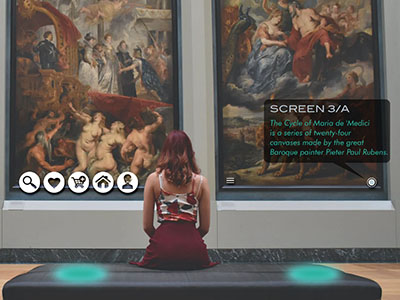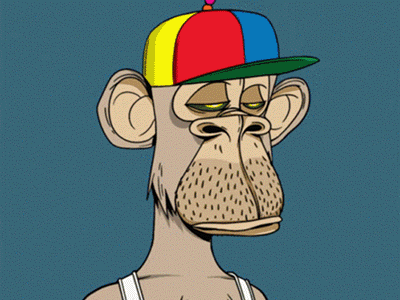Enter the future
Web 3.0 is almost here. Is your company ready?Virtual Reality
Virtual reality means, essentially, "almost reality”. It is the simulation of reality through devices such as virtual reality headsets, intended to replicate situations that would be otherwise impossible to be lived.
Using VR devices like HTC Vive, Oculus Rift or Google Cardboard, users can be taken to environments
both real and imaginary, like the top of a mountain, the lions’ cage in the Zoo, your Company’s show-room or a museum’s
hall where you can see the latest exhibition of your favorite artist.
Our experience of reality is simply a combination of sensorial pieces of information, and of our brains, which create mechanisms
to elaborate such information. Virtual Reality is capable of tricking our senses into a virtual environment generated by computers, allowing us to design and explore locations.
This technology has become famous with videogames, with its goals to make them more immersive, but virtual reality has many other applications,
anywhere it would be too dangerous, expensive or impractical to do something in reality. For instance in Architecture,
Health, Art, Sport, and training of various natures.
Augmented reality
There are many applications of Augmented Reality that can enable you to add information to the surrounding environment, contextualizing and integrating it with your systems.
Discover how AR programs can help you with the biggest challenges in your business such as production, services, training, sales, and marketing.
Many functionalities can be integrated into your AR applications:
• Image tracking: you can show additional information when the camera points to 2D images (for instance a 3D animated model, a 3D video, etc). Great to integrate augmented reality with artworks, books, flyers, and brochures.
• Location-based AR: you can show additional information based on the GPS position of your user. The latest can freely move around and AR will adapt the displayed information depending on what is pointed by the camera. A typical usage is for building virtual tours and as a support to tourist guides and the exploration of new environments. Combined with virtual reality headsets, it can create totally immersive experiences.
• Marker Tracking: similar to Image Tracking but triggered by markers and predefined symbols.
• System Integration: you can integrate information with your management systems, databases and files in your app. For instance to improve manuals, technical and customer assistance.
• Cloud integration: you can integrate Cloud’s products and services to ensure the scalability of the back-end of your app, or of the app itself in the case of Web AR. You can also take advantage of Cloud-based tools such as Artificial Intelligence, Natural Language Processing and Computer Vision.
Mixed Reality
Mixed Reality (also known as Hybrid Reality, or simply MR) refers to a hybrid reality where Augmented and Virtual reality
are combined to create new environments and visualizations. In MR, digital contents co-exist with the physical environment and interact in real-time with each other. This technology
is considered the next evolutional step in the interaction between humans, computers, and the external environment,
enabling uses that previously could only be imagined.
Unlike Augmented Reality, MR doesn’t just produce images on a screen, but it can also recognize, read and comprehend the space where it’s being used. MR understands where and at what is the user looking,
and it projects digital information or objects that, later, will remain in the place where they were created.
There are several uses and applications, such as taking a digital object into the real world as a hologram, as if it was there, so it becomes possible to interact with it.
Other usages are asynchronous collaborations between users or the insertion, in the virtual environment, of limits present in the real one, such as the impossibility to pass through a wall as we’re having a mixed reality experience.
We can also take the physical world into virtual: even though the experience is totally immersive, the device will know where the user is in the space of the real world.
Take your Company into the future, with Nemesia Studio you will always be a step ahead.
Artificial Intelligence
Artificial Intelligence (AI) is a technology that aims to simulate human intelligence in machines. It can analyze data and take actions that will provide the best options necessary to reach your objectives.
Its functions have been used for a long time, even though we may not notice it; some examples are vocal recognition and writing assistance,
but AI can help create applications where a great amount of data is processed and simultaneous calculations take place, allowing formidable results.
We can think about a well-known application of AI, self-driving cars, but this technology is impacting many other domains: psychology, diagnostic and preventive medicine,
finance, transport, airports, and even in our homes with services like Netflix and Facebook.
An interesting thing about AI is its ability to learn autonomously. This process is called Machine Learning, a branch of AI that aims to make machines learn with little (or even without) human programming.
Some emerging solutions offered by AI are Natural Language Processing, Virtual Assistant/Chatbot, and Intelligent Data Processing. In businesses, AI can help reduce costs by improving processes, increasing revenue, and providing management solutions.
Many companies are already working on successful projects with AI: and yours?
Let’s talk about it, together we can find the solution you’re looking for.
NFT - CRIPTO ART
Integrated communication is now enriched by a new marketing tool, a communication tool that mixes Art, Crypto, and blockchain technology.
What is an NFT?
A Non-Fungible Token is an encrypted electronic certificate that represents a unique digital object: an artwork, photography, text, video, an audio file, etc.
All these digital objects can be certified as original, as they were signed by the author. Kept in digital wallets (aka Wallets), they are created in a limited number,
and therefore gain an exclusive status and value.
Crypto Art
Crypto Art is a category of art based on blockchain technology. For companies, is a unique opportunity to promote their Brand
and position themselves with originality in communities.
Culture, fashion, luxury, food, cosmetics, sport, automotive: more and more brands are successfully exploring crypto-marketing with NFT releases. Some of these operations include digital goods, artworks, merchandising, and digital replicas of products. In the first semester of 2021, this new exciting market has generated sales of over 2 billion dollars. According to the Financial Times, at the end of the year almost 41 billion dollars were spent on NFT. 2022 will see the debut on the market of companies like Sony and Coca-Cola, while Adidas has recently announced that its next collection will include articles that can be sold both physically and as NFT.
Meta Generation
In constant evolution, Nemesia Studio offers consultancy, production, and releases of NFTs. We design and create trending content, we research the right artistical design and the most famous artists to ensure the best Non-Fungible Token release. Iconic brands and products can be published as NFTs and become works of Crypto Art. With us, you can transform your brand, your product, or your showroom into authentic digital artwork. We consider this special moment as the first days of the Internet in the 90s and social media at the end of 2000. Some people see this as a 30 days opportunity: we see it as an opportunity for the next 30 years.
3D
There are many possible usages of 3D modeling and rendering, from photography, animations and advertising, to interactive solutions.
From a 3D project, we can realize a Photorealistic Rendering, a real "photo" of a virtual object. We can then use it for printed and web catalogs without having to produce it.
Therefore, we can pitch a product that is still just a concept (and easily modify it after receiving feedback).
Photorealistic Rendering can also become a video with 3D animations and dynamic rendering. Depending on needs,
it is possible to change the characteristics of a product: materials, colors, background, and other details.
The use of CGI (Computer Generated Imagery) in communication and advertising is becoming more and more important, to the point where many companies wonder
if it’s still convenient to rely on traditional photography when, for instance, they can have videos in wild, far away parts of the world, making virtually anything creative idea possible.
With this technology that mixes photomontage and 3D rendering, it’s possible to reproduce hyper-realistic assets for advertising.
Today, most companies prefer to rely on agencies like Nemesia Studio, which can combine communicative and photographic efficacy with 3D design.
From a 3D CAD model, we can create the image of the final product in its environment. In a few days, we can have an output so realistic that it looks like real photography. All cost-effective.
From automotive to cosmetics, it has never been so seamlessly to create a video where a Suv climbs up a volcano, or to photograph a fragrance on the bottom of the ocean or in the middle of a jungle.







